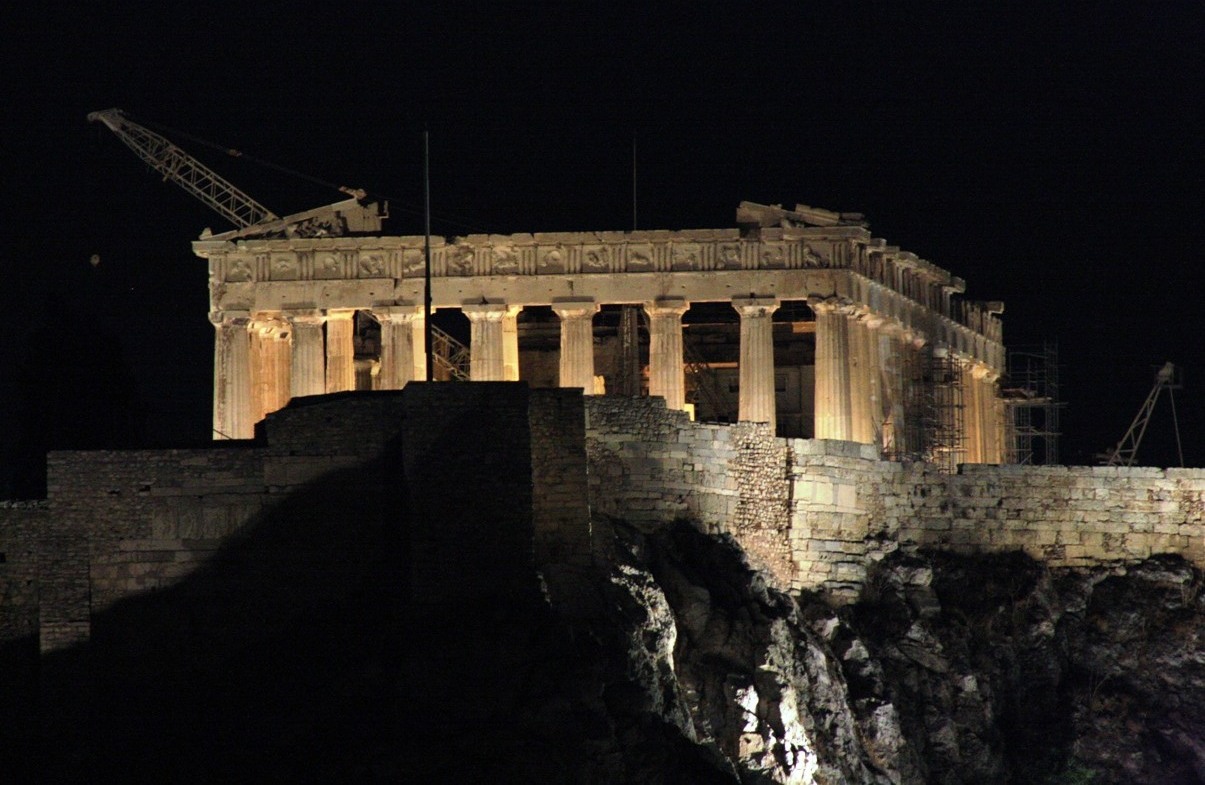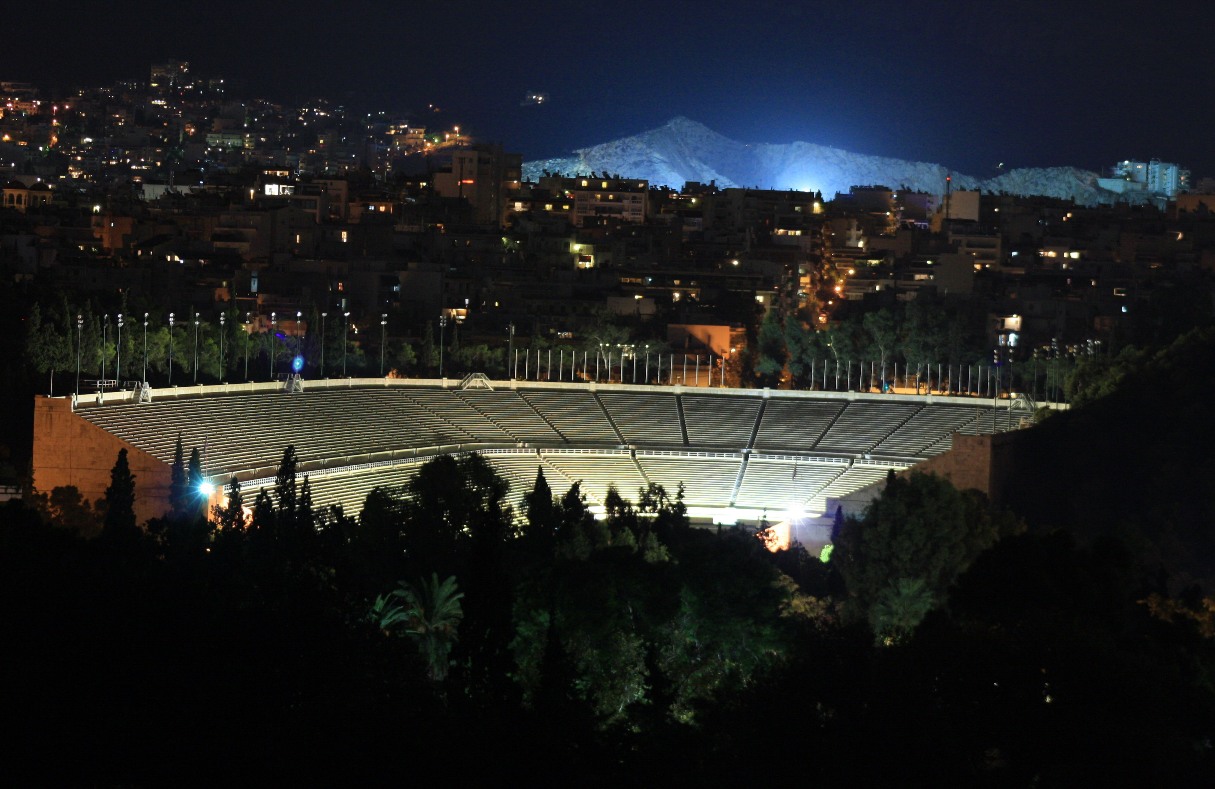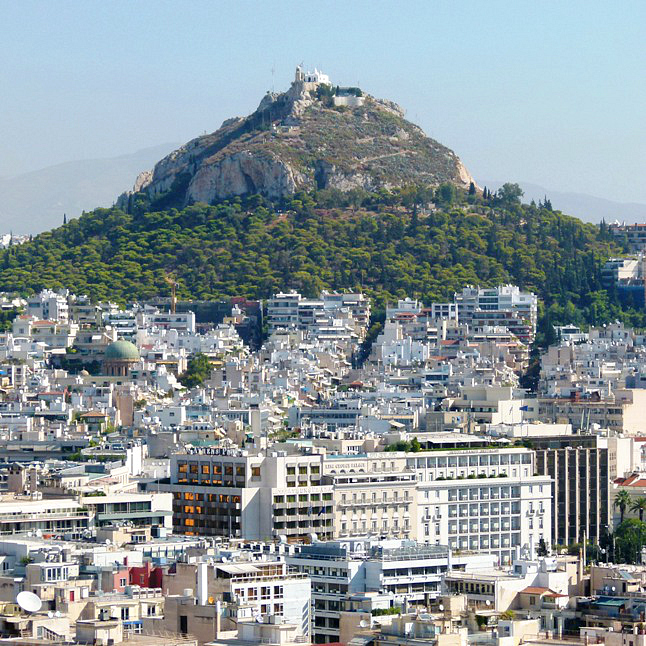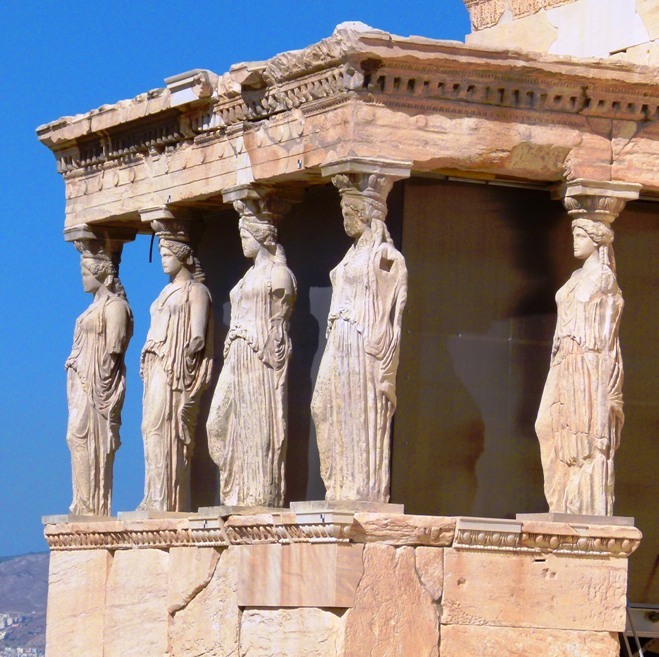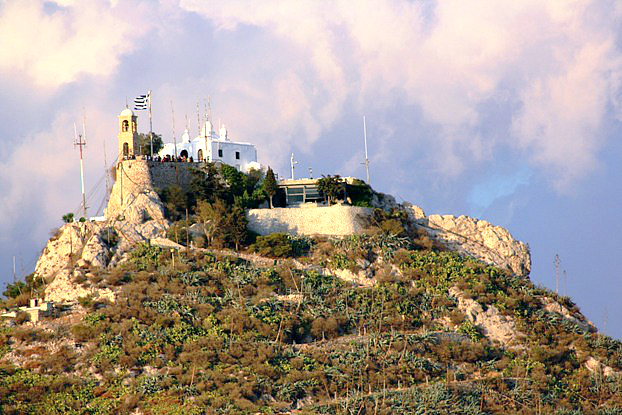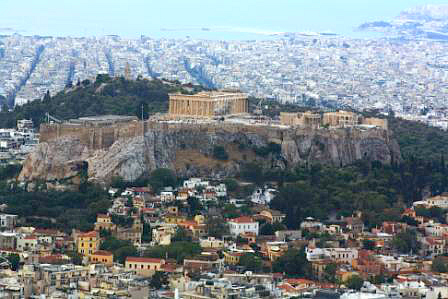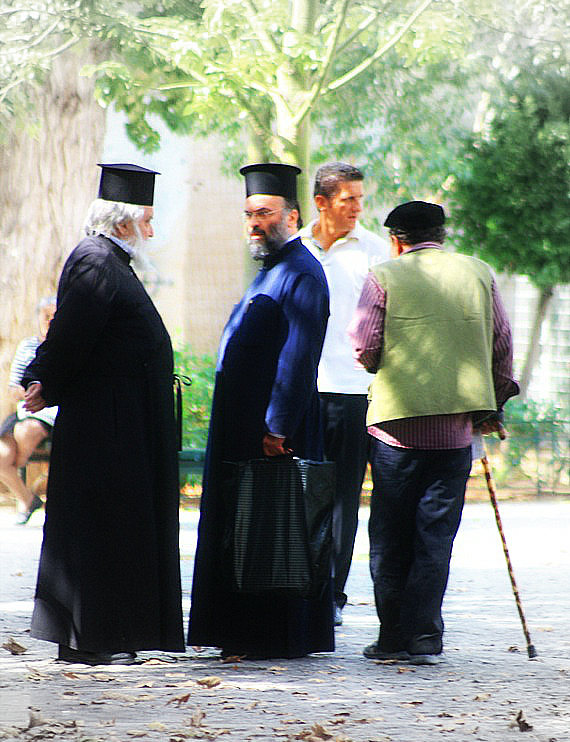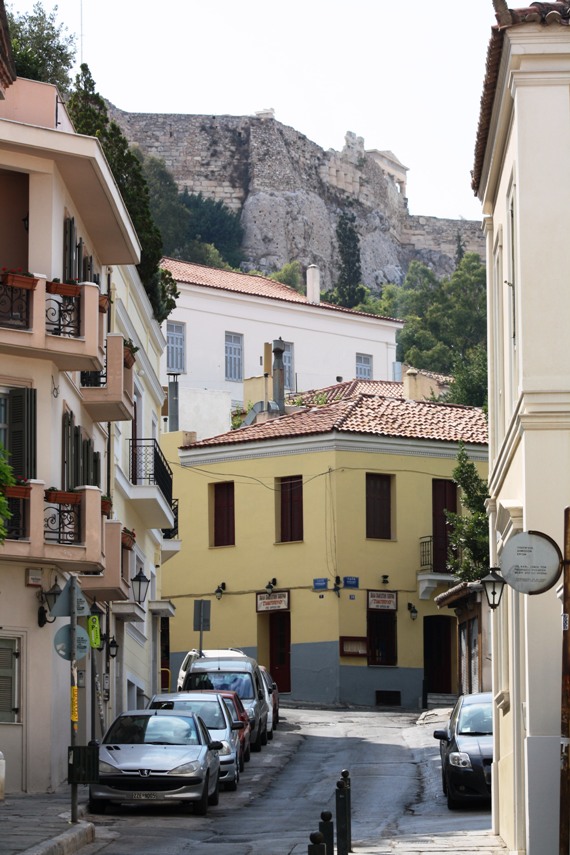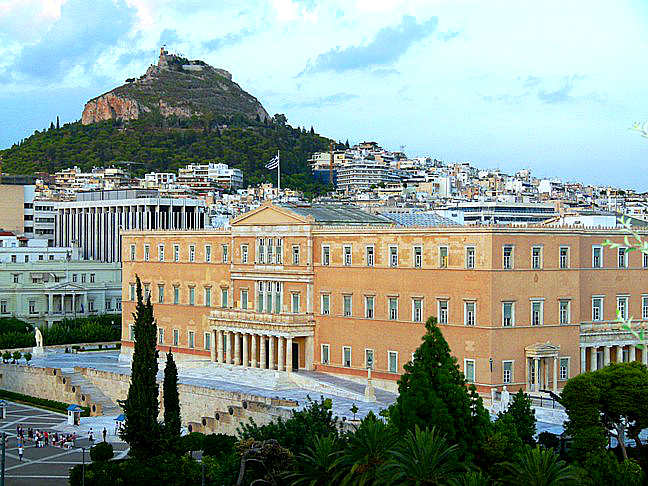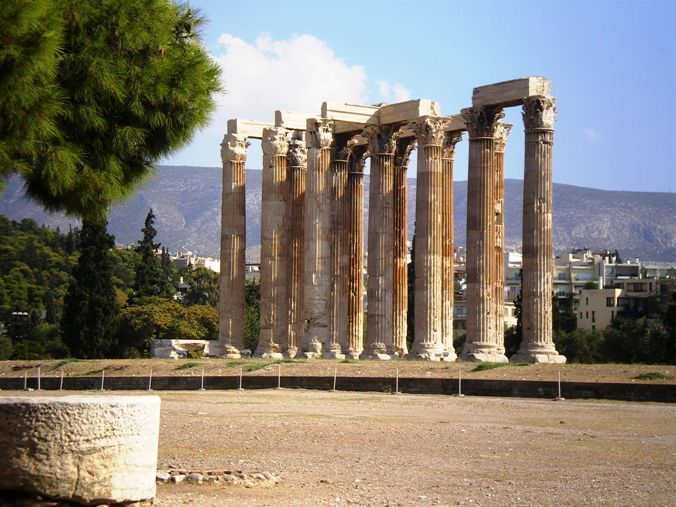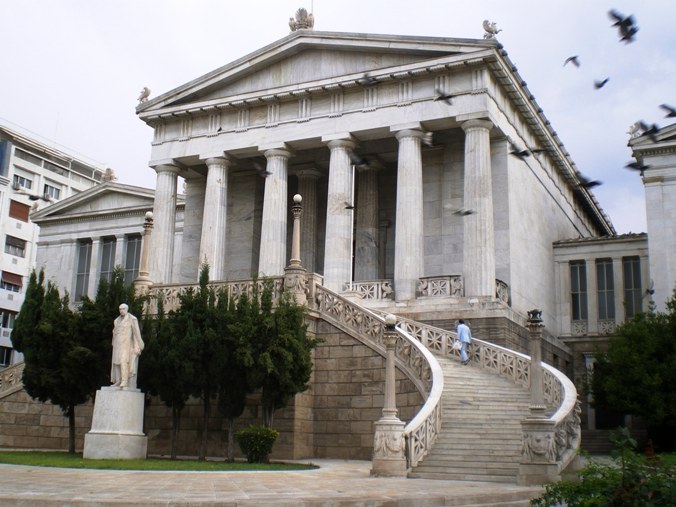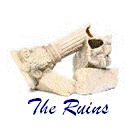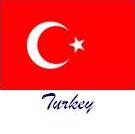The place where democracy was born, as were Hippocrates, Euripedes, Alexander the Great, Pythagoras, Homer, Plato, Aristotle, Archimedes, Epicuris and so many more; apparently the Greeks now feel they've contributed enough and they can sit back and expect others to support them. This strategy hasn't worked out too well. Everywhere a Greek historical site was established, the Romans took over and over-built it with their own. The Greeks haven't woken up from their complacency ever since. Still, their buggered economy is no reason to avoid the country; we'd been to places in worse shape.
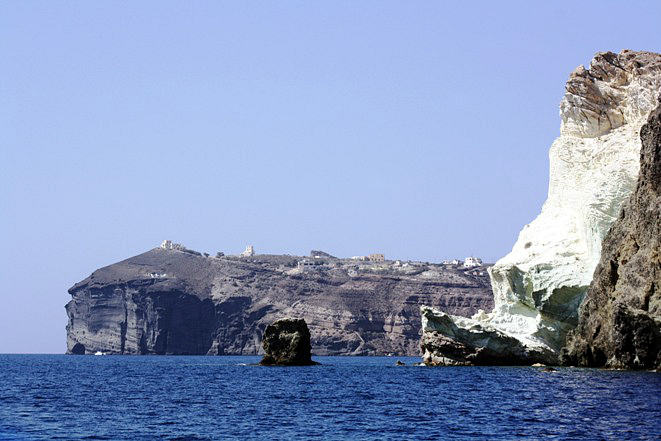
Samos
Bucket List Rating 

A small, pretty island off the Turkish coast, 7 kms and less than an hour's ferry ride from Kusadasi but less than 2km from the Turkish coast as the crow flies. A part of the Ottoman empire from the 1500s until the 1820s. Around the 17th century Samos was granted the status of a semi-independent state. In 1824, an Ottoman army assembled to invade the island, but Greek naval victories off Samos averted the threat. The island remained free for the remainder of the war. The treaties concluding the war, which established the independent Greek kingdom, again put Samos under Turkish rule. In 1835, the Samians achieved self-government as a semi-independent state tributary to Ottoman Turkey. The island was united with the Kingdom of Greece in 1912 with the outbreak of the Balkans wars.
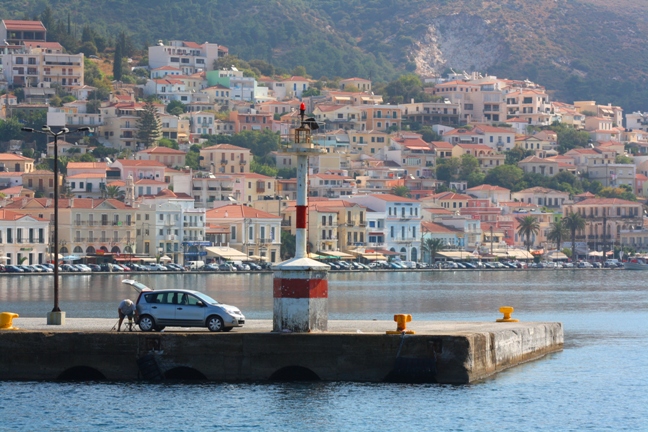
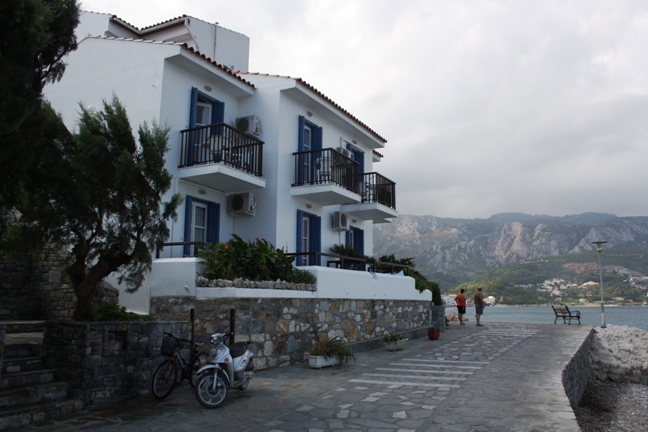

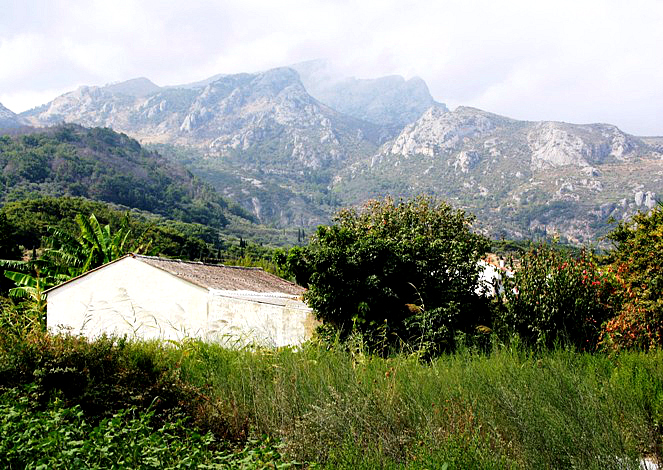
The port at Vathy and the postcard pretty little town of Kokkari.
Rhodes
Bucket List Rating 



The real start of the Greece leg of the Ruins tour, departing Turkey by ferry from Marmaris. With the Greek economy on the scrap heap and news of discontent and riots in Athens, but with Greece getting positive reviews from those who have been there, we weren't sure of what to expect. The old port at Rhodes, crammed with tugs, ferries, fishing boats and flash yachts and cruisers was a positive introduction, reinforced all throughout our stay. We can't say what the impact to the average Greek was from a stressed economy but the locals we came across mostly displayed a cheerful, easygoing demeanor.
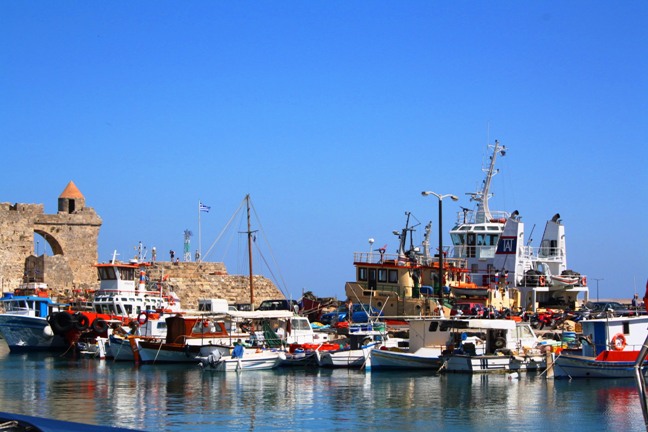
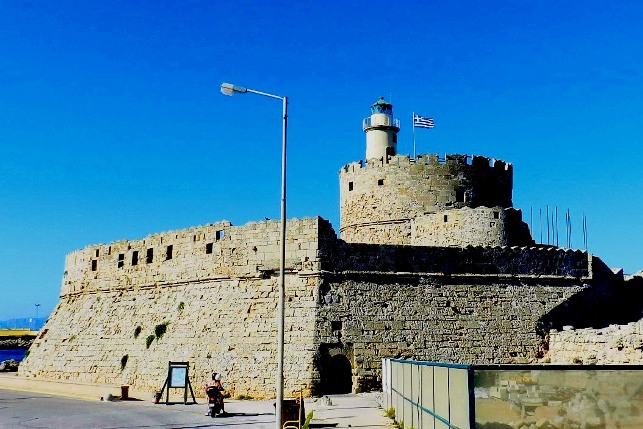
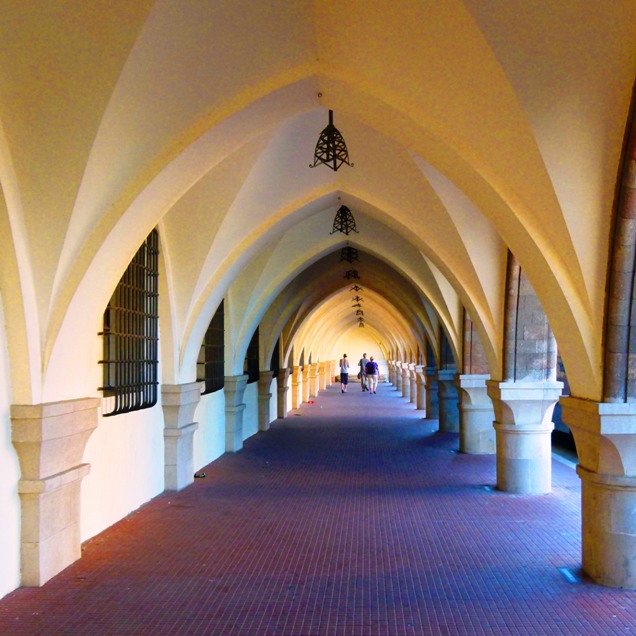
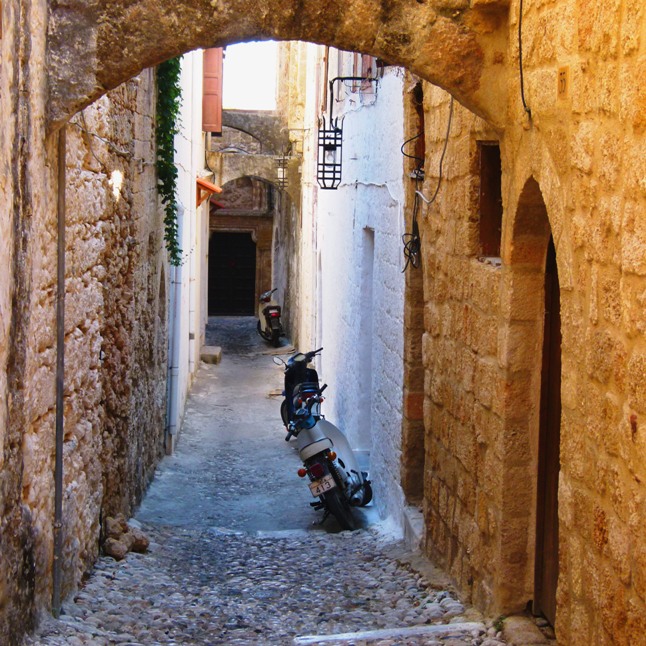
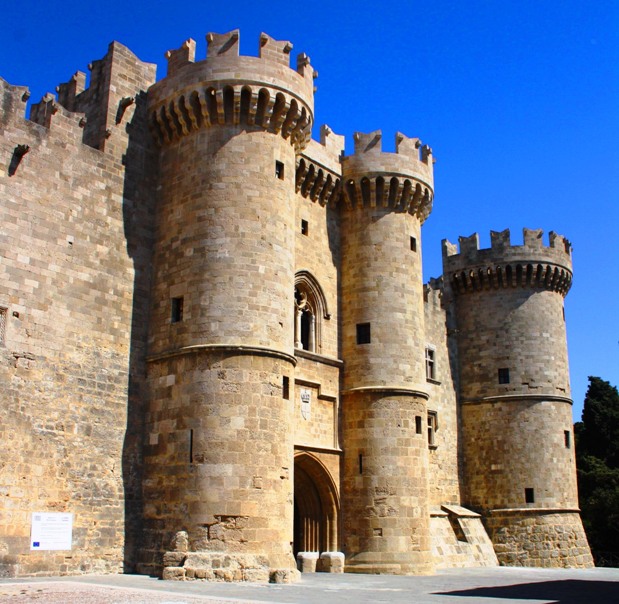
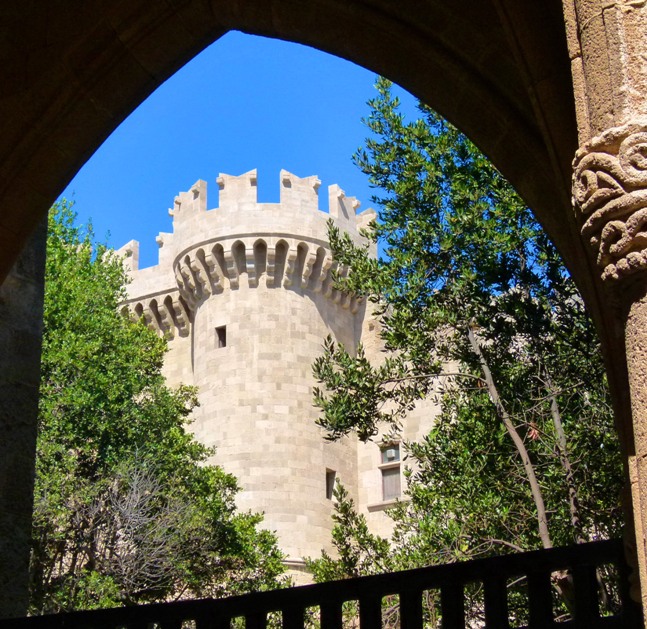
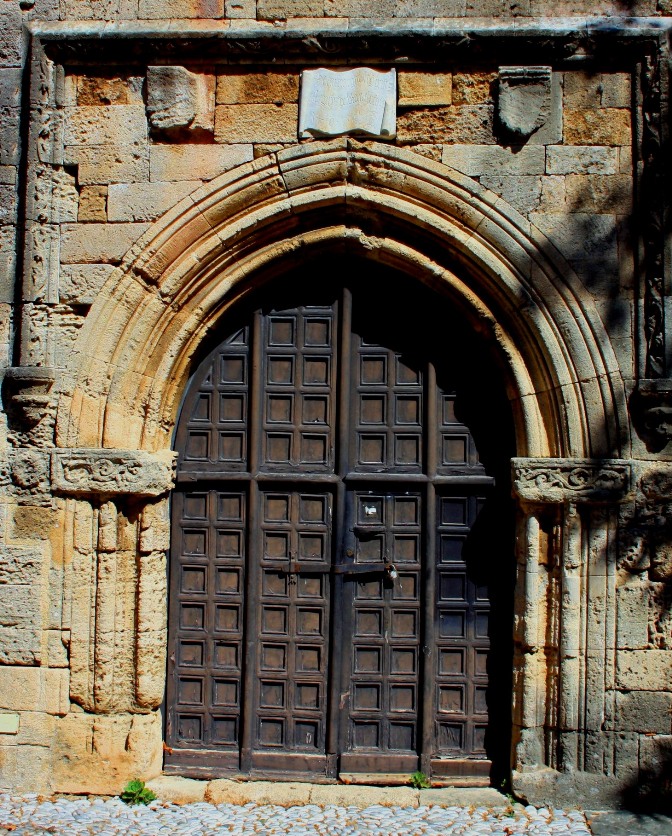
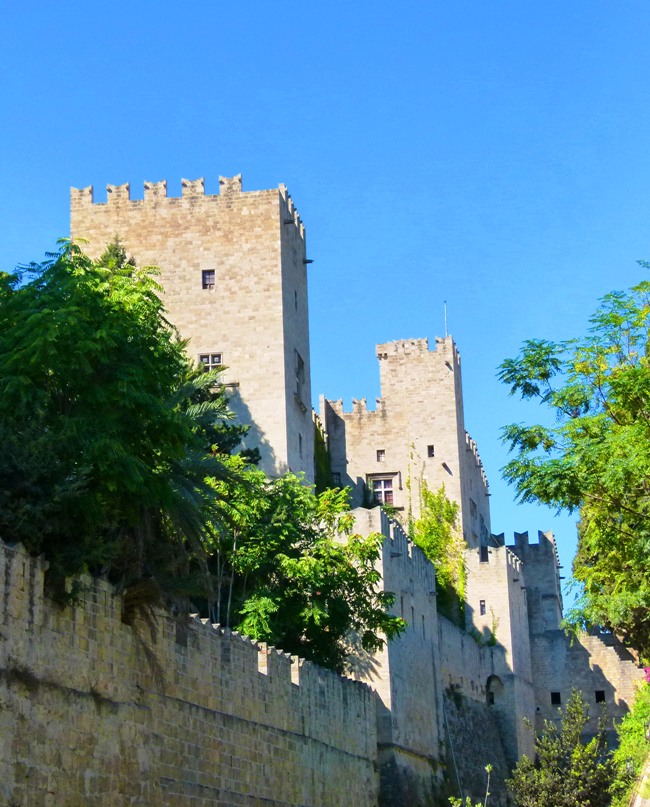
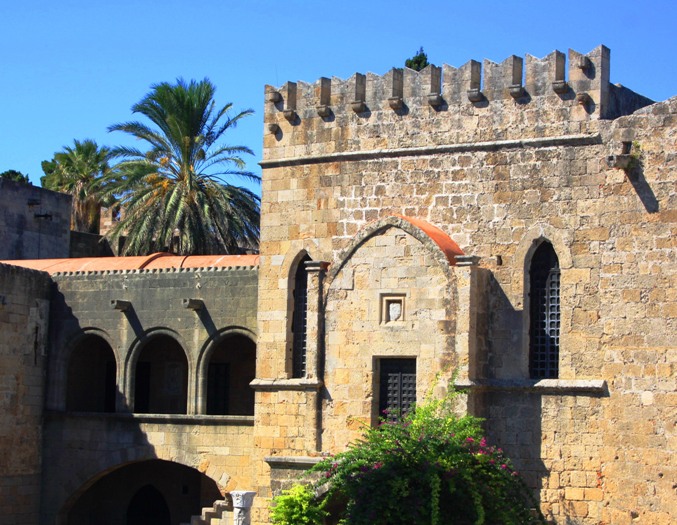
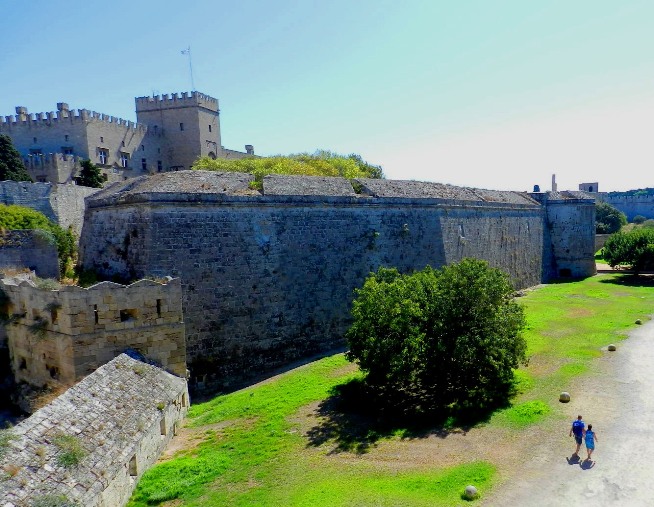
Variously Byzantine, Greek, Ottoman and Genoese, Rhodes, the town on the northern tip of the island is dominated by the Old Town, one of the largest medieval towns in Europe. Old Town of Rhodes is a mosaic of different cultures and civilizations. Twenty-four centuries of history are contained within its walls. The medieval fortress-like buildings, bastions, walls, gates, narrow alleys, minarets, old houses, fountains, tranquil and busy squares and the Palace of the Grand Master, originally a Byzantine fortress built at the end of the 7th century AD, converted in the early 14th century by the Knights of the Order of Saint John into the residence of the Grand Master of the order and the administrative headquarters of their state; now turned into a museum.
Mykonos
Bucket List Rating 



A well known name, but not recognised by we antipodians as a hip tourist mecca for northern hemispherian would-be copulators of the night club scene, the gay set and the buffed and tanned self-obsessed trendsters. Preknowledge of such status would have turned us off the visit and that would have been a shame. It's a small island and a small town, but the hip and groovy concentrate in only one part of the town and the wanker-haven Super Paradise Beach on the other side of the island. Forget Super Paradise Beach - a disco set on the sand where pricey booze and preening seem to be the main themes. Instead, Fokos Beach set on a unspoiled cove is found by driving down a discrete dirt road on the northern coast. It's quiet and secluded, with a pebbly but pretty beach and a modest but funky welcoming taverna in which to sit and admire the view while you dry off after a swim. Perfect!
A dry, dusty and very brown island at the end of the summer, its port town of Mykonos is a pretty collection of whitewashed houses around the small harbour and surrounding hills. Frenetic traffic made up of buzzing rental quad bikes and scooters and tiny, wobbly 3 wheeled trucks of the locals (given the compact size of the place it doesn't take too many vehicles to become frenetic), a tangle of squeezy backstreets that tourists don't venture into in any great numbers. All in all, quite a nice place for sunning around a hotel pool and venturing into town on foot and exploring the island by bus, car, quad bike or scooter. Pre-tourism, the place must have survived on fishing and sparse farming of a few goats and onions on rocky land holdings along the narrow roads lined with stone walls. Some grand houses are scattered around back road hills for who-knows-who rich bastards. Tiny red-roofed Greek Orthodox churches proliferate, 365 of them, one for each day of the year we were told but a Google search suggests about 250.


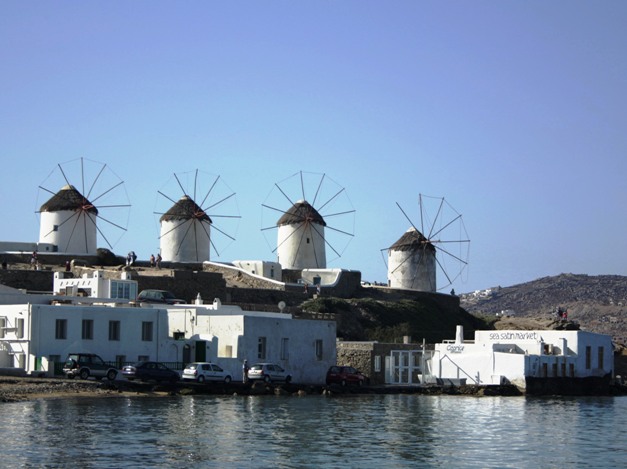
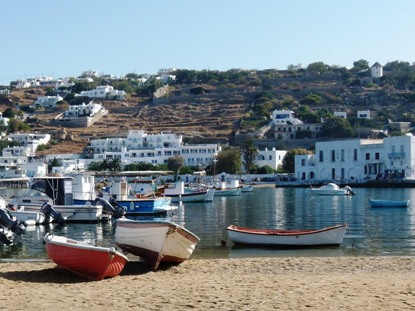

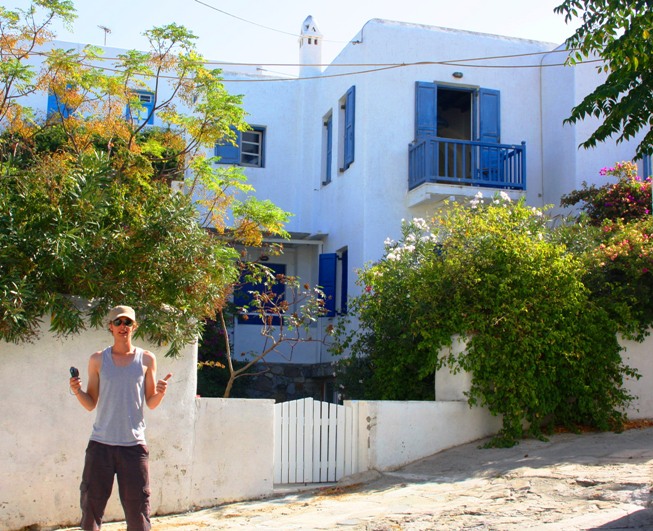
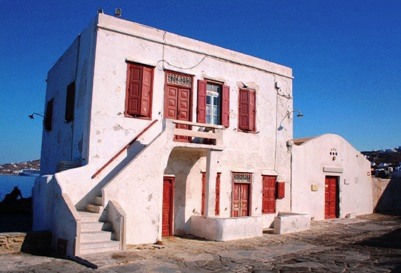


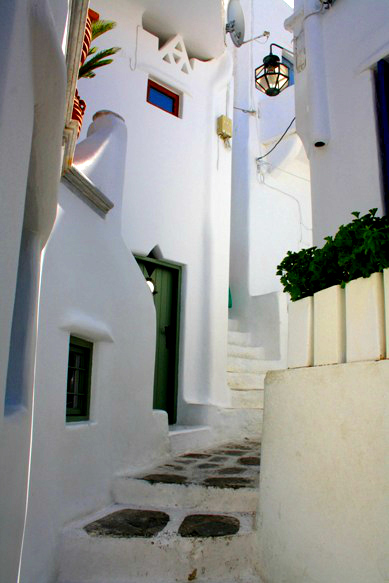
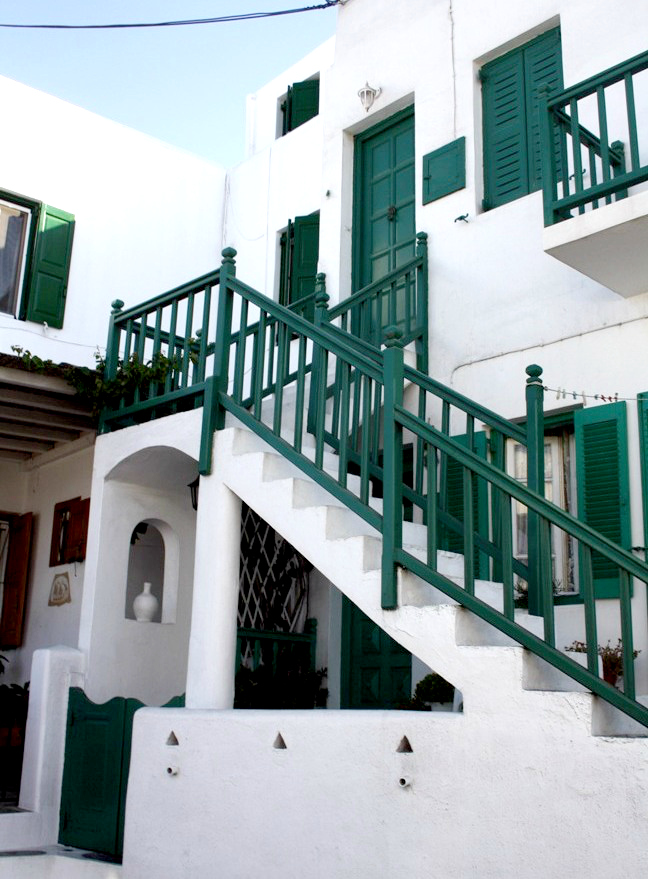
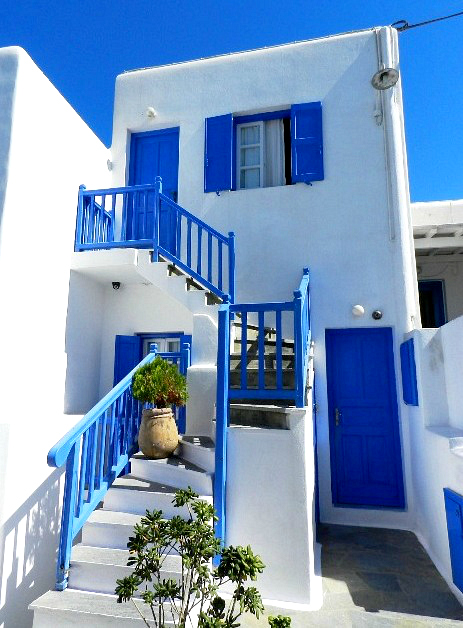
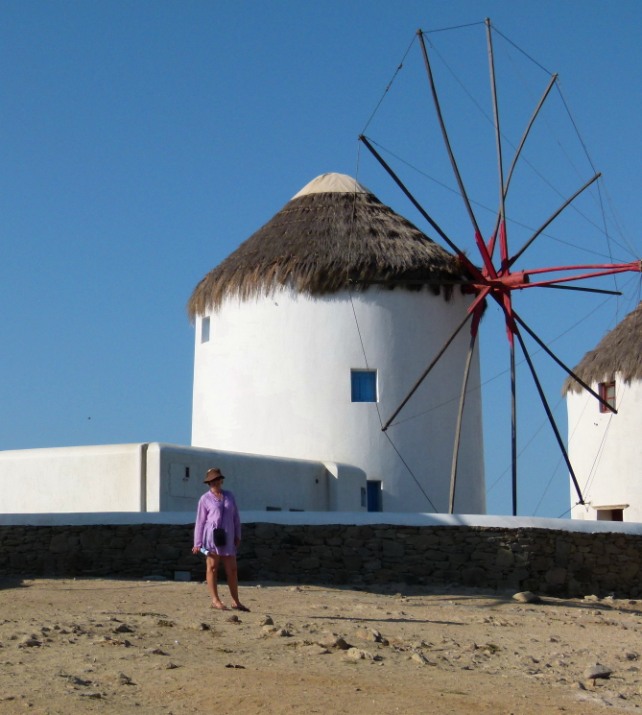
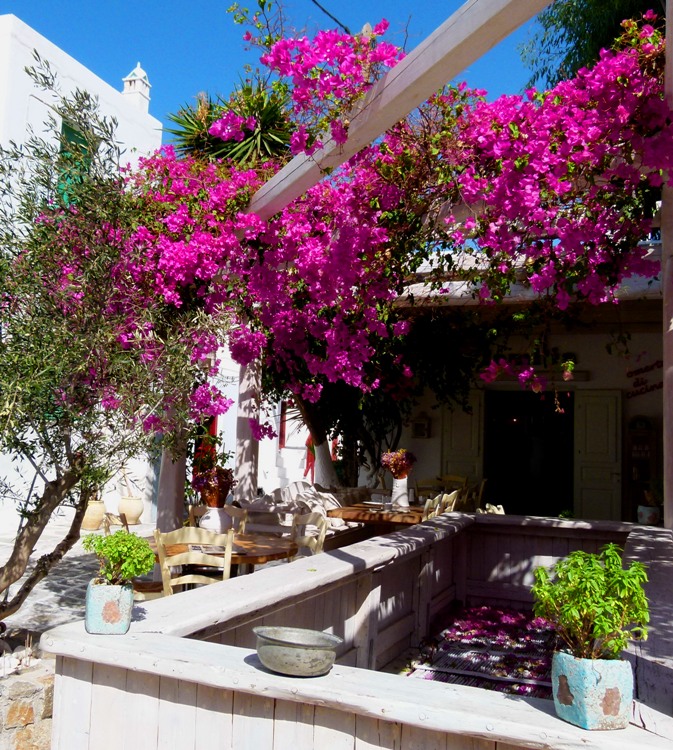


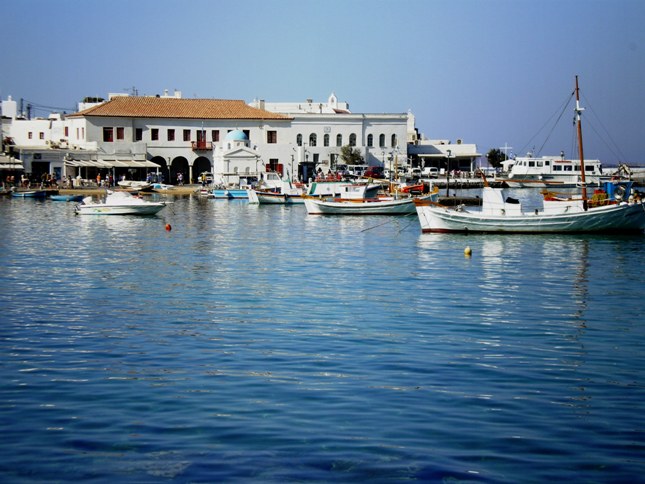

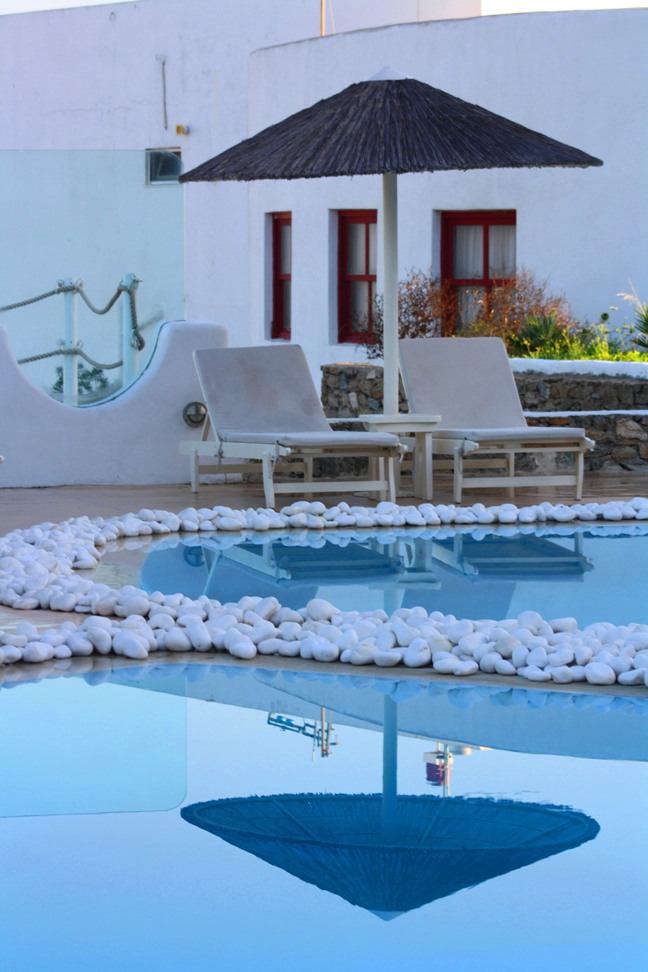

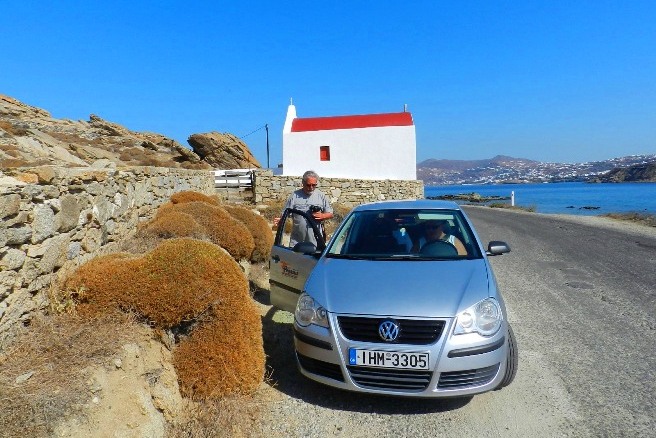
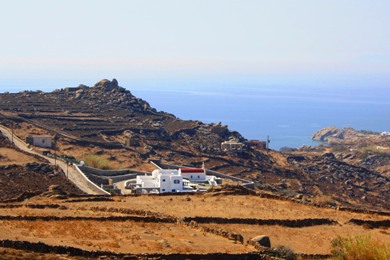
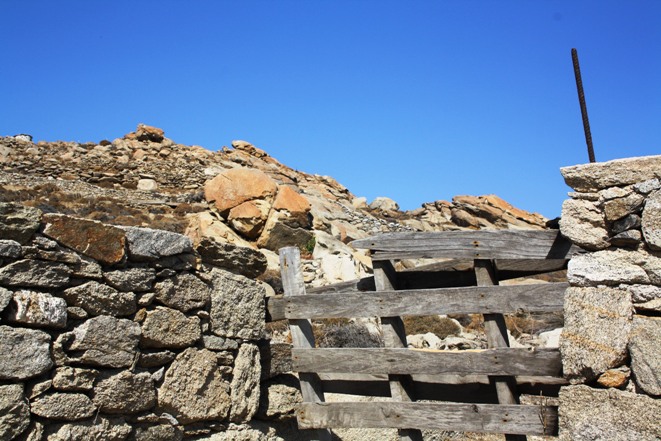
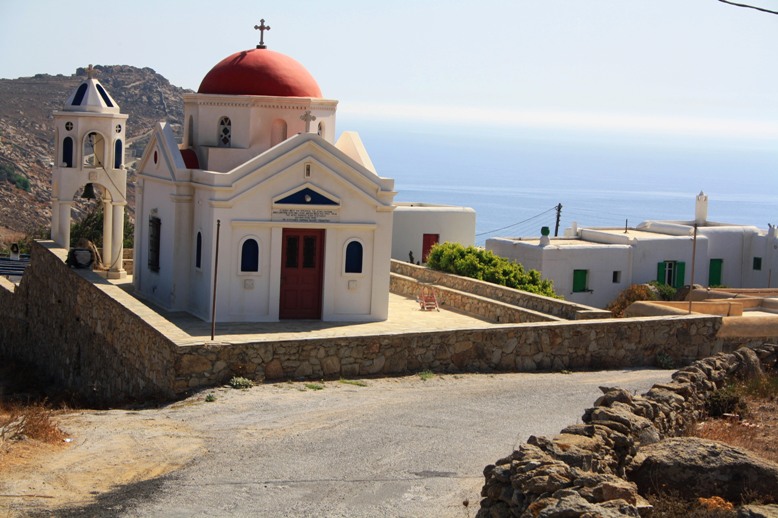
Santorini
Bucket List Rating 




Beautiful, beautiful Santorini. Vertiginous, splendorous, perpendicular, breathtaking visually and physically. A croissant-shaped rim of a collapsed volcanic caldera, with the main town of Fira stretched along the edge of the highest part of the rim, overlooking the 12km wide lagoon that was once a volcano and providing panoramic views all along the cliff-top walkways and warrens of hotels, shops, homes, churches and bars that spill over the edge. A stay in Santorini should be included on everybody's bucket list.
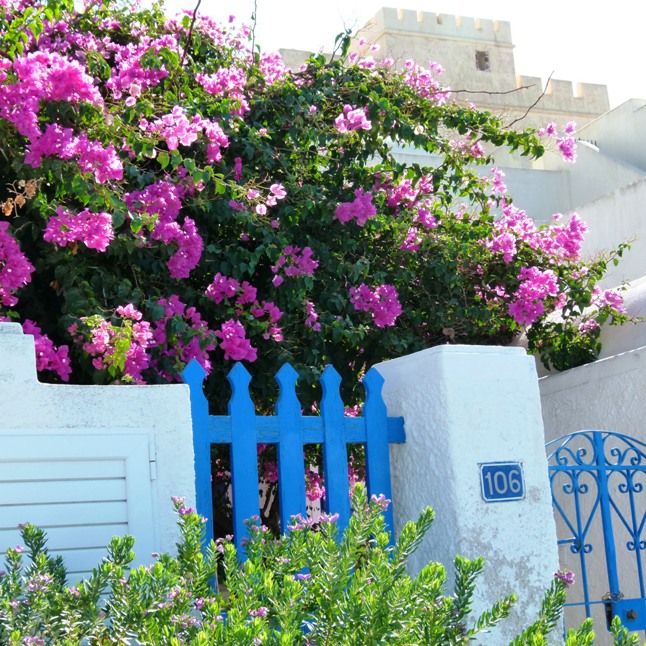
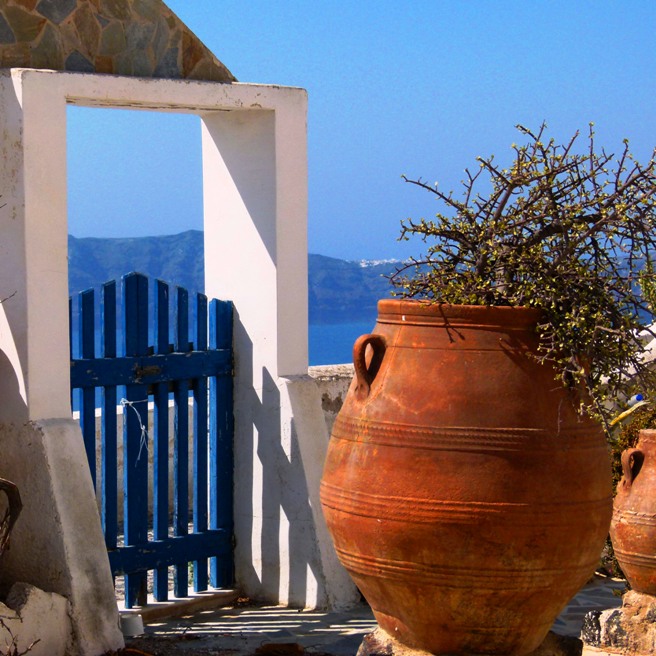
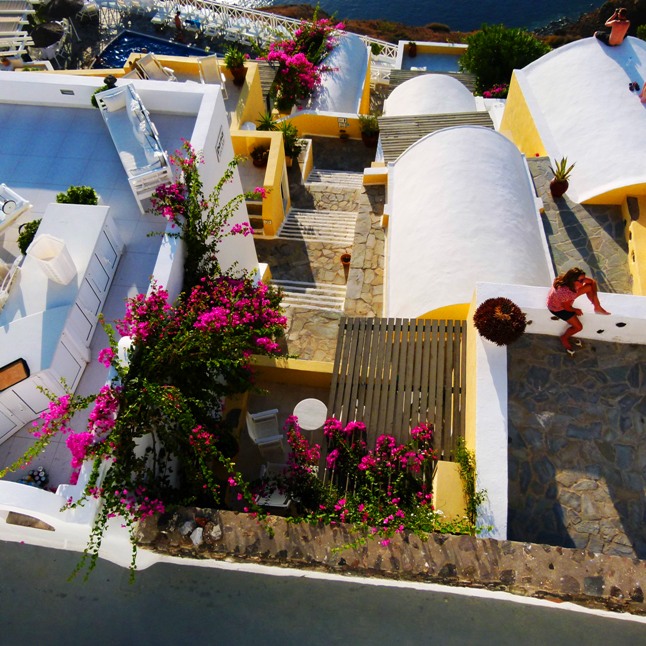
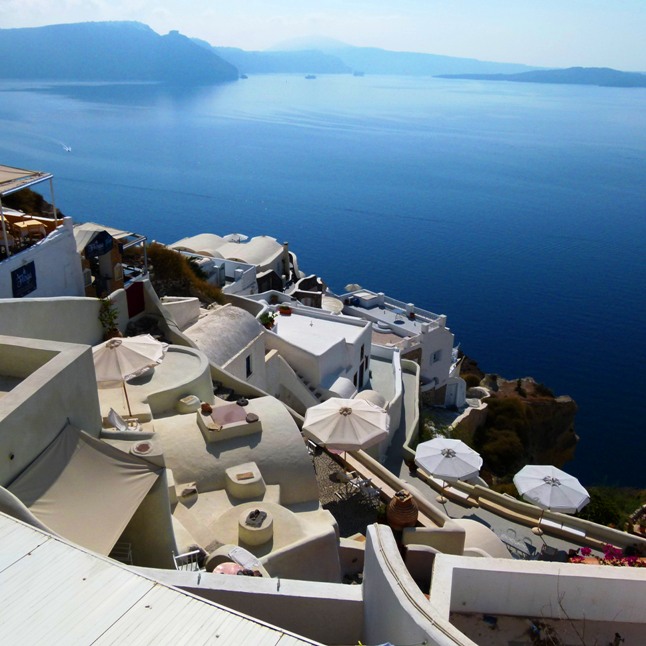
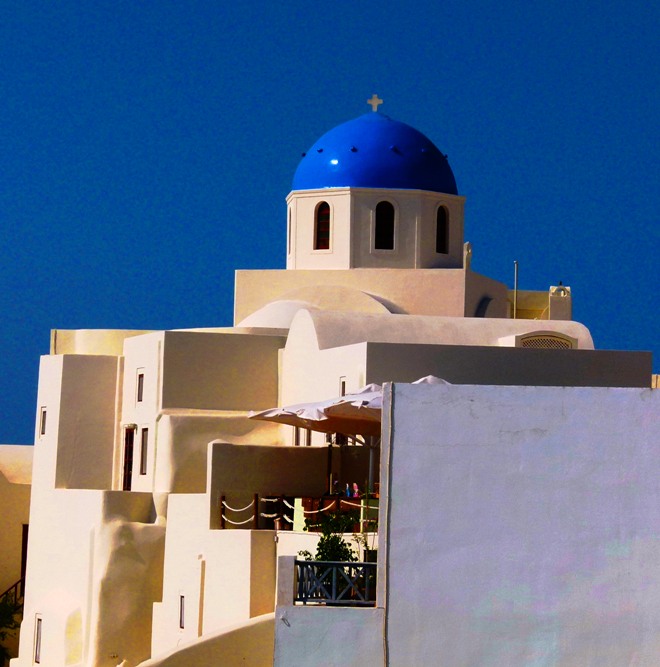
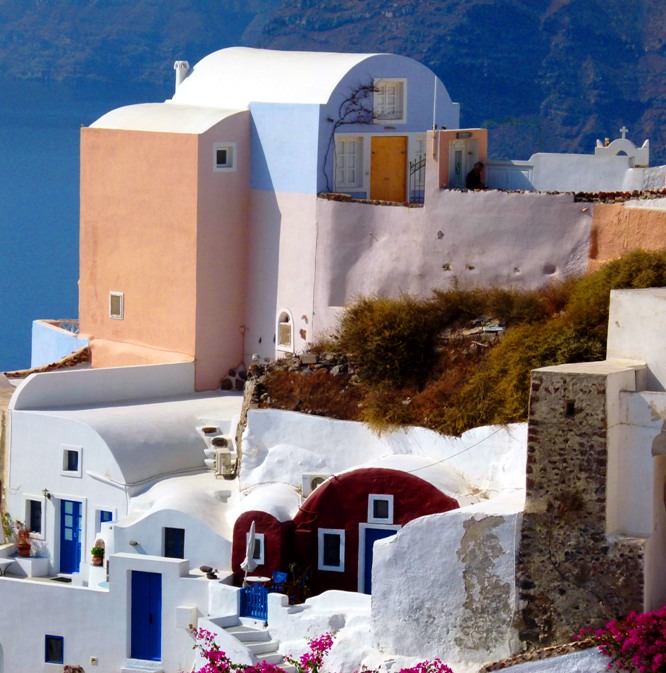
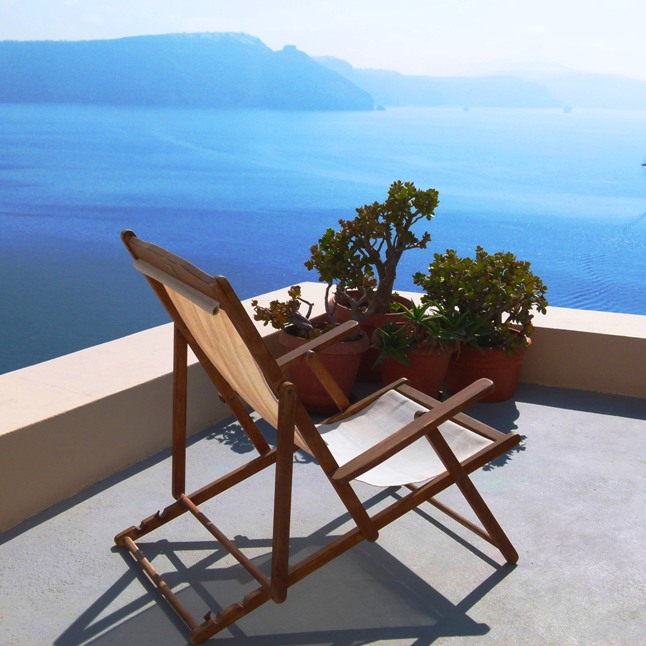
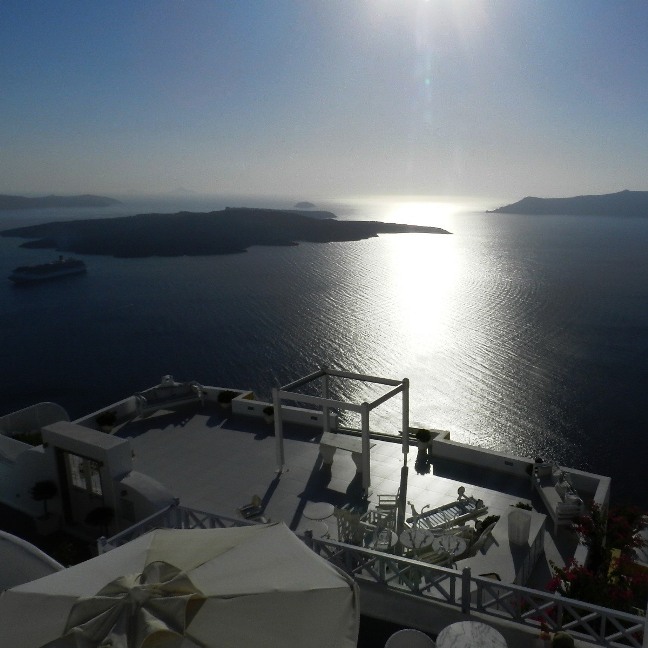

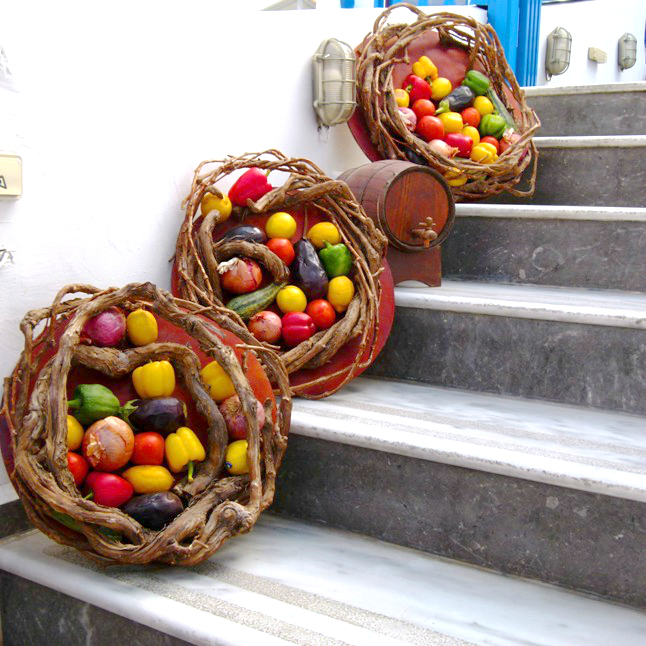
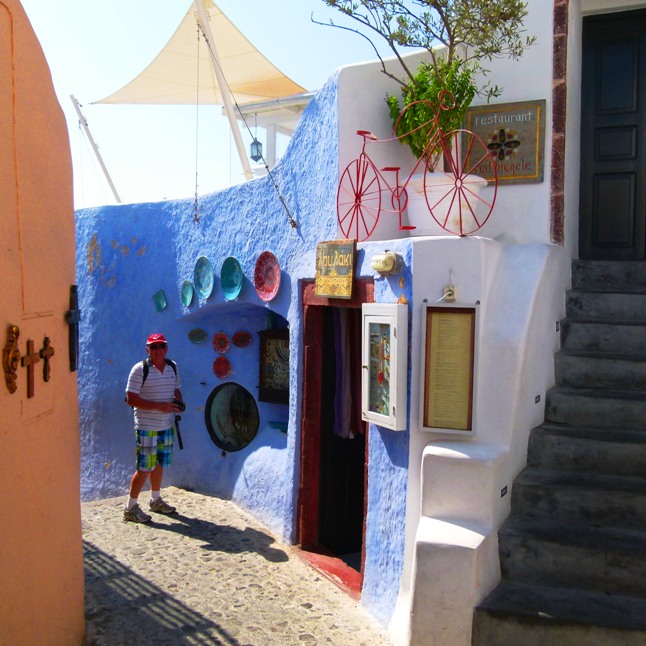
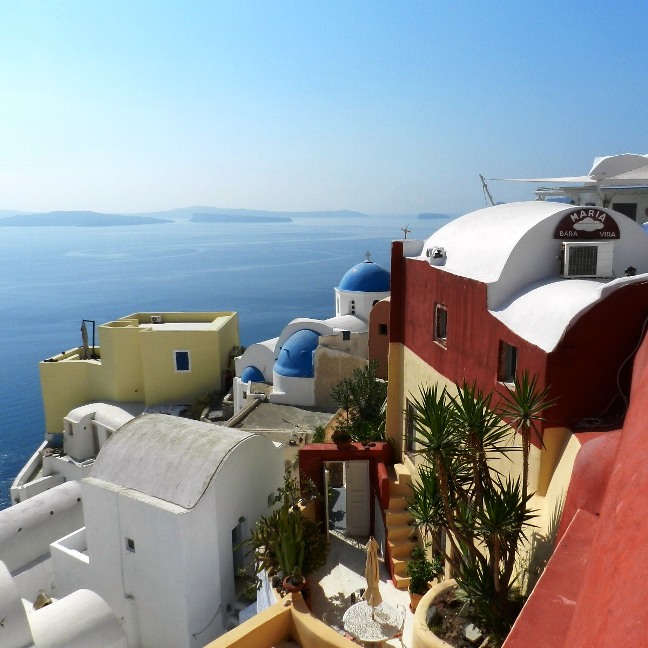
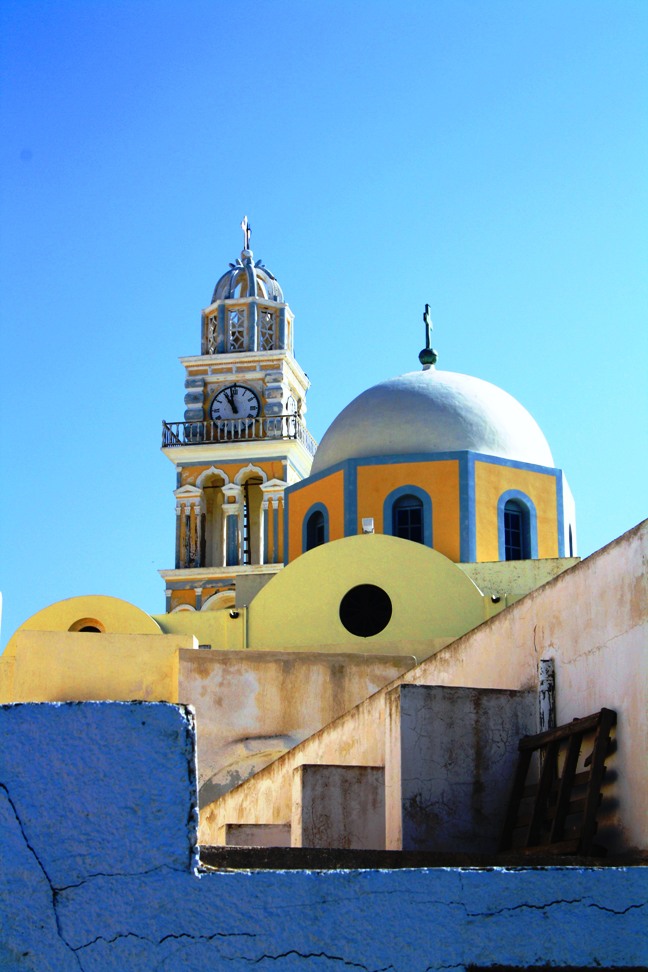
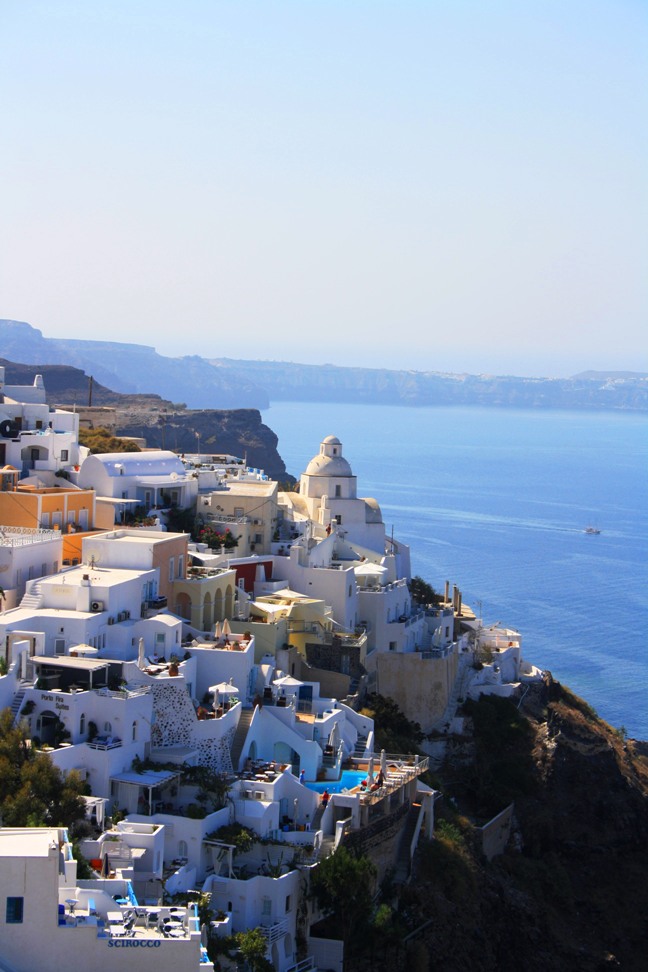

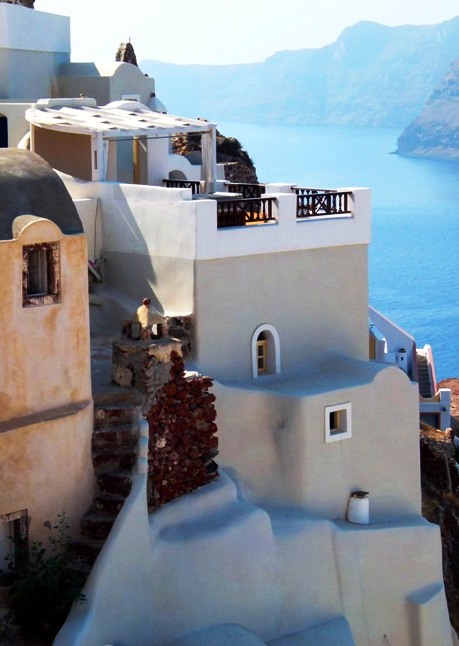
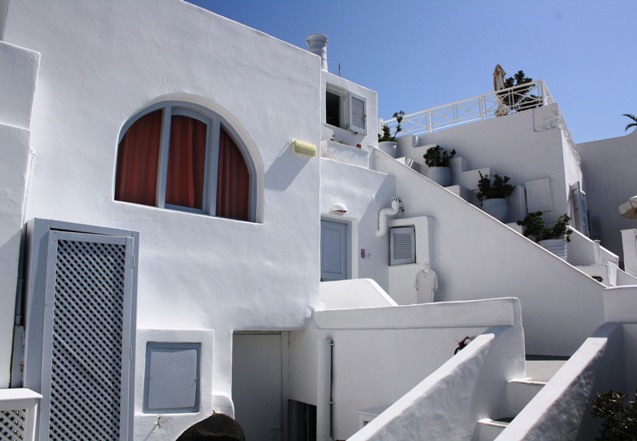
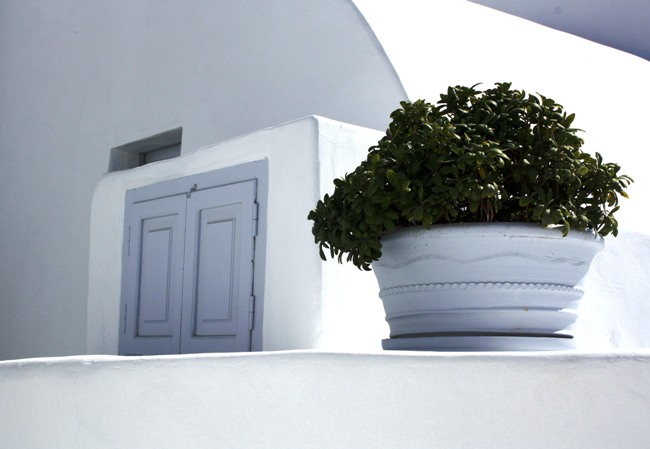
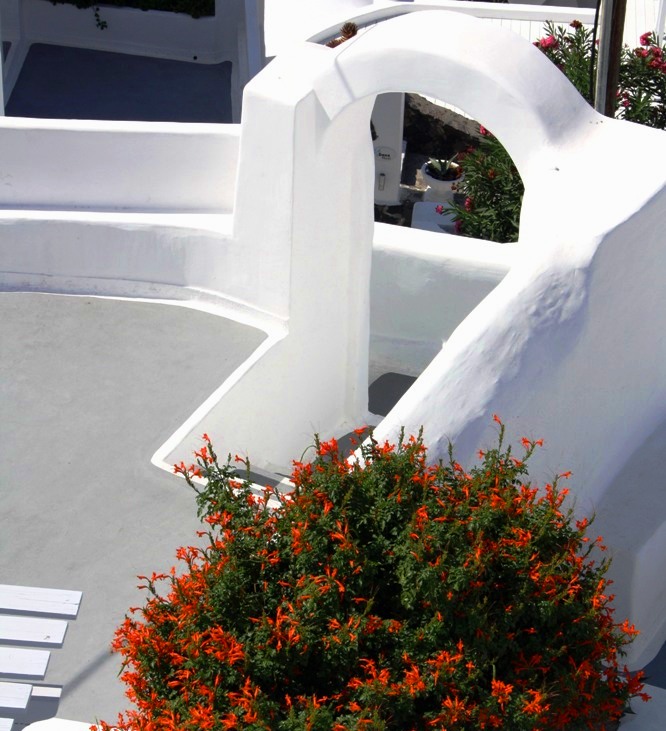
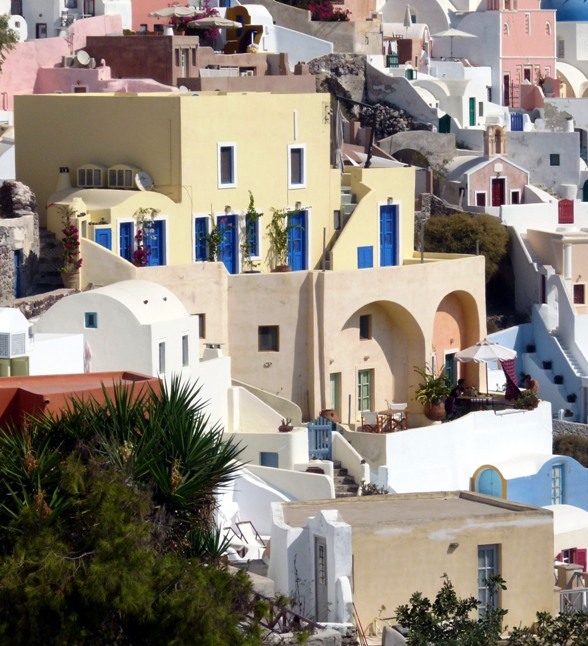
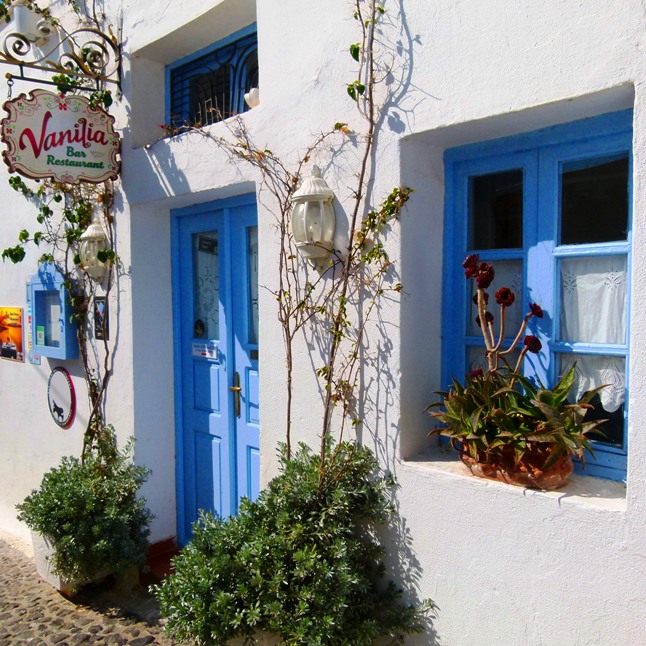

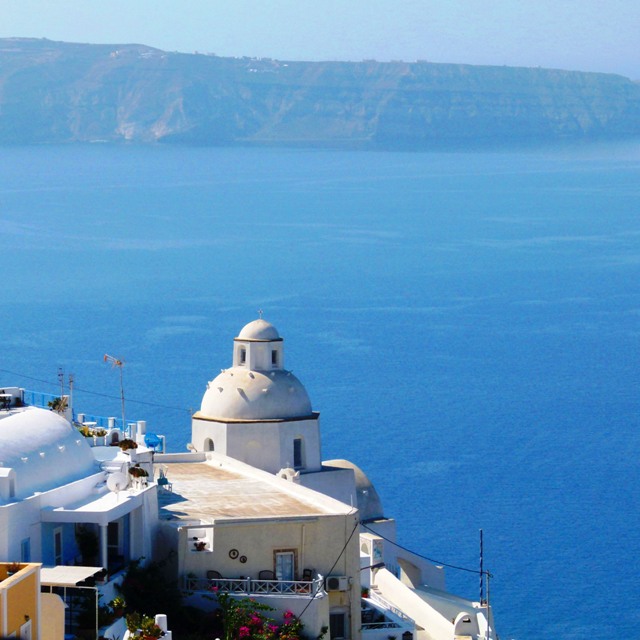
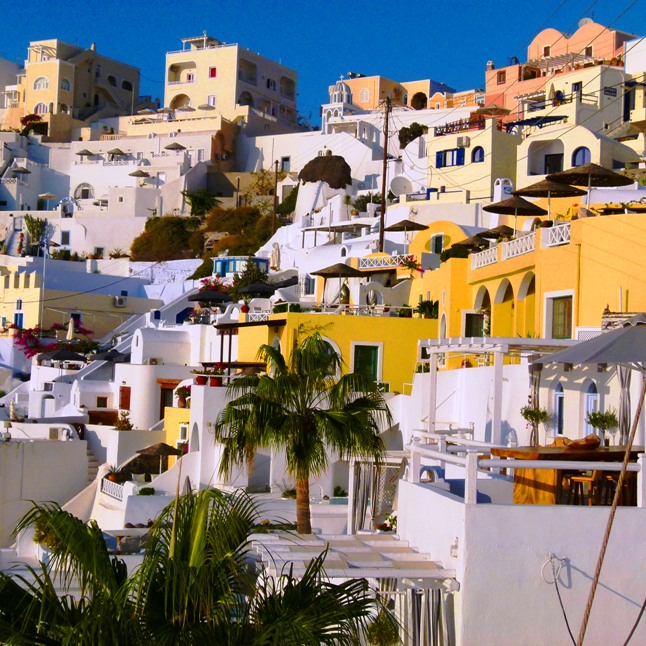
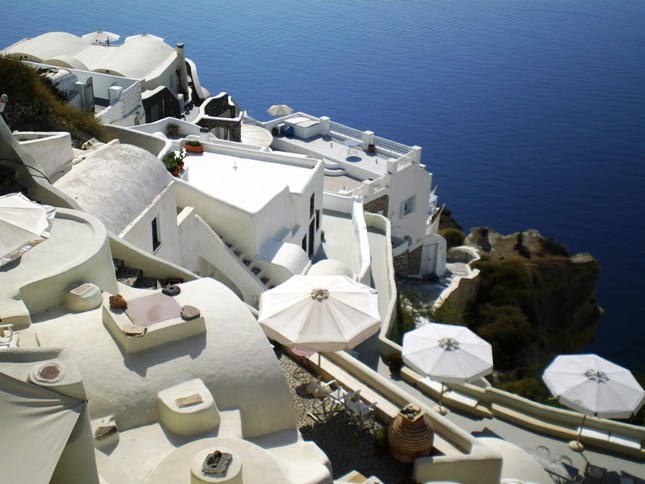

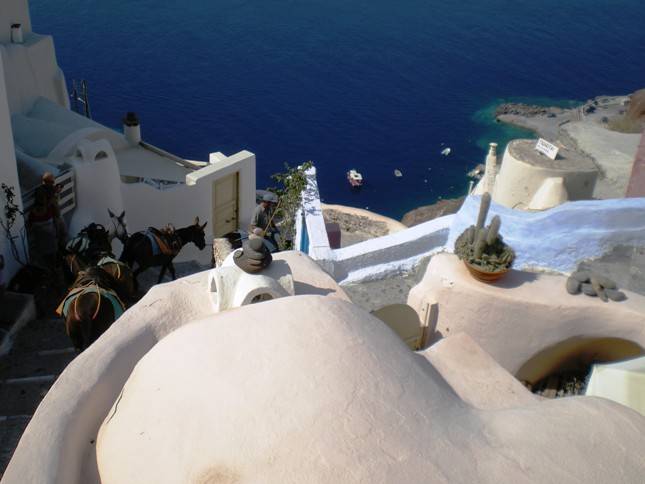
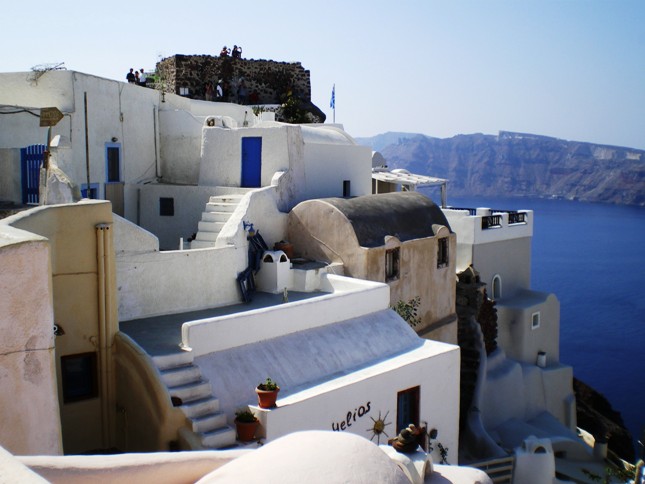


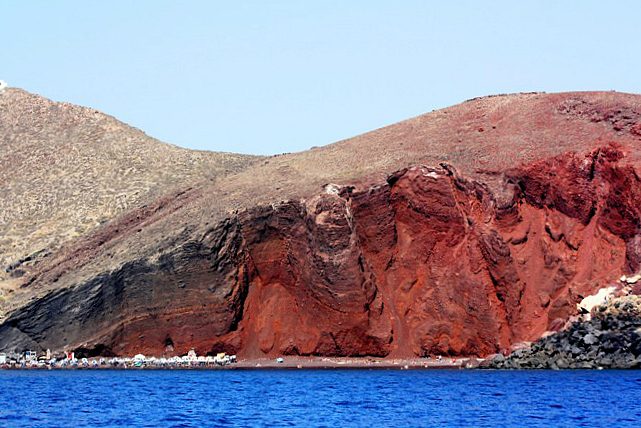
Athens
Bucket List Rating 



The apparent epicentre of Greek resentment that their sense of entitlement is being questioned, we were prepared for Athens to be just our departure point for home, with visits to the Acropolis and Parthenon and a quick exploration to justify the cost of passing through. The preconceptions were unfair, as Athens turned out to be well worth some effort. A spread out city that is easygoing but bustling in a Greek way - fast, frantic traffic but otherwise laidback. Riot police were a fixed but non threatening presence around the Parliament House precinct across the street from our hotel. One small, half-hearted riot was held on our last night, the furniture on the roof of our hotel had not been replaced after having been tossed over the side in a previous riot, a few too many shuttered and graffitied shop fronts - aside from which it was pretty funky and enjoyable.
